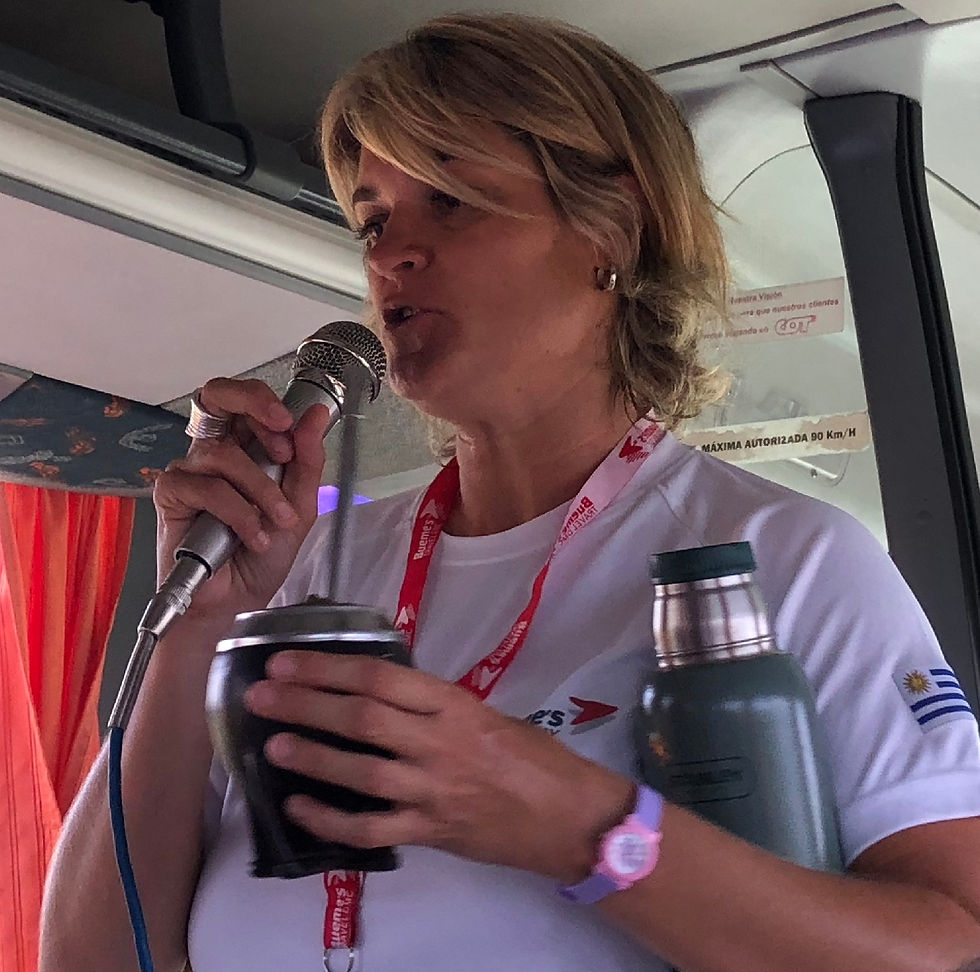Back to Uruguay: Sun, Sand & $tash
- Susan Nash
- Jan 29, 2019
- 3 min read
January 26, 2019, Punta del Este, Uruguay — The Punta del Este peninsula off Uruguay’s southern coast has been compared to St Tropez. It’s a vacation destination for Argentinians, Brazilians and Uruguayans... but mostly Argentinians: If they leave their money in banks at home, the gov’t can take it to pay bills and ‘we’ll pay you back later when we have the money.’ Better to stash their money in Uruguayan real estate and come for a couple of days a year for some sun and sand. There are many VENDE signs since many of the properties are not homes, just assets.
In winter, Punta’s population is 10,000 and the town’s so empty it’s ‘spooky,’ said our guide, Mariana. All those high-rises with no lights on. In summer — right now — the population reaches around 500,000! Visitors enjoy horseback riding, casinos, clubs, film festivals, whale watching, birding and lots of beaches. The water is so warm, it is a common birthing spot for whales, which can be seen right from the beaches.

Chilean artist Mario Irrazábal created the popular plastic hand on the beach. His hand(s) sculptures have appeared around the world, including in Venice — two hands climbing from out of a canal up a palazzo wall.

The local free art museum had a Marc Chagall exhibition.

Mariana is a grade school teacher who moonlights as a tour guide during summer vacations. Many people need two or even three jobs since salaries are low and the cost of living so high in this spendy resort. But it’s a desirable place to live: no terrorism, no security issues... beautiful $500,000 - $20 million mansions have no bars on the windows and no fences. You can buy a modest seaside retirement home for $200,000. These are fairly small mansions... groundskeepers have lots of work here.



Did you notice the thatched roof? Not uncommon.
Maté is the national drink of Uruguay, also of Argentina and Paraguay, and it is found elsewhere in South America and even in Arab countries. ‘It’s awful and bitter but... if you don’t drink maté, you’re not Uruguayan,’ said Mariana. A generous handful of ‘yerba mate’ (‘gourd herb’) goes into your special gourd-shaped maté mug. Boiling water goes into the Thermos® you tuck under your arm. People walk around all day so equipped:

Throughout the day, you refill your mug with hot water, reusing the herbs, sipping your awful bitter drink through a special metal straw with a filter at the bottom. I’d shot the straws in a shop window in Colonia del Sacramento.

Below: The somewhat Gaudi-esque Casapueblo (house of the people) on Punta Ballena was the mansion and atelier of Carlos Páez Vilaró (1923-2014), an abstract artist and painter, sculptor, potter, muralist, writer, composer and ‘constructor’ [Wiki]. Today it is a museum, hotel and art gallery.

Vilaró’s 19-year-old son Carlitos was one of the few survivors of a famous (infamous) plane crash in the Andes in 1972: A Uruguayan plane carrying a Uruguayan college rugby team, their friends and families crashed in the snowboound Andes. Of 45 passengers, 16 survived the 72-day ordeal by resorting to cannibalism. Vilaró would not give up hope that his son was still alive and mounted continuous searches. I remember the story in Life magazine. Alive by Piers Paul Read became a bestseller in 1974 and a 1993 film with a young Ethan Hawke.
Sail-away from Punta was gorgeous. En route to the Falklands.

Total non sequitur: The next morning, on a ‘sea day,’ the resident photographer/lecturer used one of my photos as part of his talk on ‘Shooting on the Street.’ #









Comments